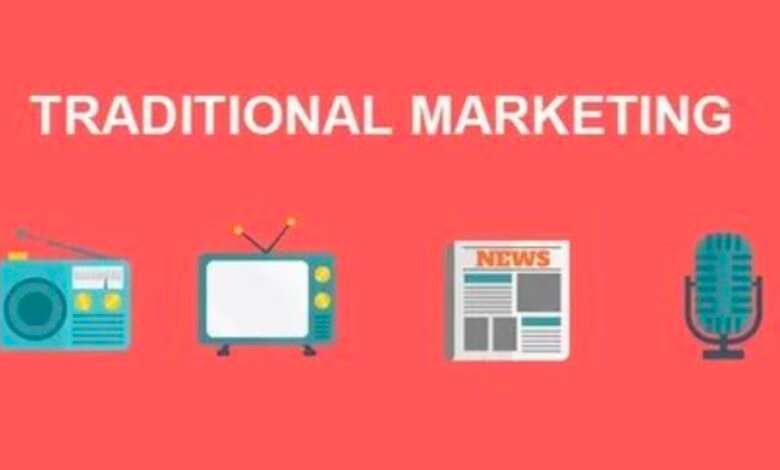The Benefits of Traditional Marketing and Advertising for Small Businesses

In a digital-first world where online advertising dominates, it might seem counterintuitive to invest in traditional marketing and advertising. Yet, for many small businesses, traditional methods remain not only relevant but also incredibly effective. From building trust to reaching diverse audiences, traditional marketing can provide a solid foundation for business growth. Here, we’ll explore the benefits of traditional marketing and advertising, and how it complements modern strategies.
1. Building Trust Through Tangibility
One of the most significant advantages of traditional marketing is its tangibility. Flyers, brochures, and branded merchandise provide physical evidence of your business’s existence and credibility. Unlike digital ads that can disappear with a click, tangible marketing materials linger in people’s homes and offices, acting as constant reminders of your brand.
For example, branded notebooks are an excellent way to keep your brand in front of customers daily. Whether they’re taking notes during a meeting or jotting down a to-do list, your logo and message remain visible. Such promotional products foster trust and familiarity, ensuring your business stays top-of-mind.
2. Local Reach and Community Connection
For small businesses, especially those reliant on local customers, traditional marketing can be a game-changer. Leafleting, posters, and local newspaper ads target specific geographic areas, ensuring your message reaches those most likely to engage with your business.
Community involvement, such as sponsoring local events or sports teams, also strengthens your business’s reputation. Seeing your logo on event banners or branded notebooks handed out at local fairs creates a positive association with your business. This personal connection is something digital ads often struggle to replicate.
3. Better Audience Targeting for Certain Demographics
While digital marketing offers detailed targeting options, traditional marketing can be more effective for reaching older generations or those less active online. For example, direct mail campaigns are highly successful among audiences who value the personal touch of receiving physical correspondence.
Moreover, advertising on radio or local TV stations ensures your message reaches a broad yet focused audience. This approach works particularly well for businesses offering services or products with mass appeal within a specific locality.
4. Longevity of Marketing Materials
Traditional advertising materials often have a longer lifespan than digital ads. A billboard or magazine ad can generate impressions for weeks or even months, whereas a social media ad might only appear for a few seconds. Similarly, branded items like notebooks, pens, or mugs are used repeatedly, providing ongoing exposure for your brand.
By investing in high-quality, useful promotional items, small businesses can ensure their branding endures long after the initial campaign. For example, branded notebooks not only promote your business but also offer practical value to customers, increasing the likelihood of continued use and visibility.
5. Higher Engagement Rates
Traditional marketing often yields higher engagement rates compared to digital methods. Direct mail, for instance, boasts a response rate of 4.4%, significantly higher than email marketing’s average of 0.6%. People are more likely to read and act on physical materials they receive, especially when personalised.
This tangible engagement fosters a deeper connection with your audience. For example, a handwritten note accompanying a promotional product, such as a branded notebook, can make recipients feel valued and appreciated.
6. Standing Out in a Digital Crowd
As the digital space becomes increasingly crowded, traditional marketing offers a way to stand out. People are bombarded with online ads daily, leading to ad fatigue. In contrast, receiving a well-designed flyer or brochure can feel refreshing and unique.
Small businesses can leverage this by incorporating creative elements into their traditional marketing strategies. For example, distributing branded notebooks at networking events or trade shows adds a personal touch that resonates with potential clients.
7. Strengthening Brand Identity
Traditional marketing helps small businesses establish and reinforce their brand identity. From consistent use of logos and colours on printed materials to branded packaging, traditional marketing ensures your business projects a professional image.
Consider how branded notebooks can reinforce your brand identity. By customising them with your logo, tagline, and colours, you create a cohesive and recognisable image that resonates with customers. These notebooks can also be used internally, aligning your team with your brand’s core values.
8. Complementing Digital Marketing Efforts
Traditional and digital marketing are not mutually exclusive. When used together, they create a cohesive and powerful strategy. For instance, a flyer promoting a special offer can include a QR code linking to your website or social media page. Similarly, branded notebooks can feature your website address and social handles, encouraging users to engage with you online.
This integration allows small businesses to reach their audience through multiple touchpoints, increasing the likelihood of conversion. By combining traditional and digital methods, you can amplify your marketing efforts and achieve better results.
9. Cost-Effective Options for Small Budgets
Contrary to popular belief, traditional marketing doesn’t have to break the bank. Small businesses can use cost-effective options like flyers, posters, and branded merchandise to promote their services without overspending.
For example, a batch of high-quality branded notebooks can be produced at a relatively low cost and distributed to customers, employees, or partners. This simple yet effective strategy ensures ongoing exposure for your business at a fraction of the cost of digital advertising campaigns.
10. Establishing Credibility and Authority
Traditional marketing channels, such as print ads and direct mail, are often perceived as more credible than digital ads. The tangible nature of traditional materials lends a sense of legitimacy to your business, building trust among potential customers.
For example, handing out branded notebooks at industry events not only showcases your professionalism but also positions your business as an authority in your field. These tangible materials signal that your business is established and reliable, helping you stand out from competitors.
11. Encouraging Word-of-Mouth Marketing
Word-of-mouth marketing remains one of the most powerful tools for small businesses, and traditional methods can help encourage it. Giving customers something tangible, such as branded notebooks, makes it more likely they’ll share their experience with friends and family.
Happy customers who receive thoughtful promotional items are more inclined to recommend your business, expanding your reach organically. These positive associations often lead to repeat business and long-term loyalty.
Conclusion
While digital marketing continues to grow, traditional marketing remains an invaluable tool for small businesses. Its ability to build trust, foster community connections, and offer tangible engagement ensures it holds its own in a competitive landscape. By combining traditional and digital strategies, small businesses can create a well-rounded approach that maximises their reach and impact.
Promotional products like branded notebooks exemplify the enduring value of traditional marketing. Whether used as giveaways, gifts, or internal tools, these items serve as powerful reminders of your brand’s presence and professionalism. By embracing the benefits of traditional marketing, small businesses can strengthen their foundations and set themselves up for long-term success.
Also Read : https://usamagmirror.com/ruchi-gautam-manager-macquarie/



